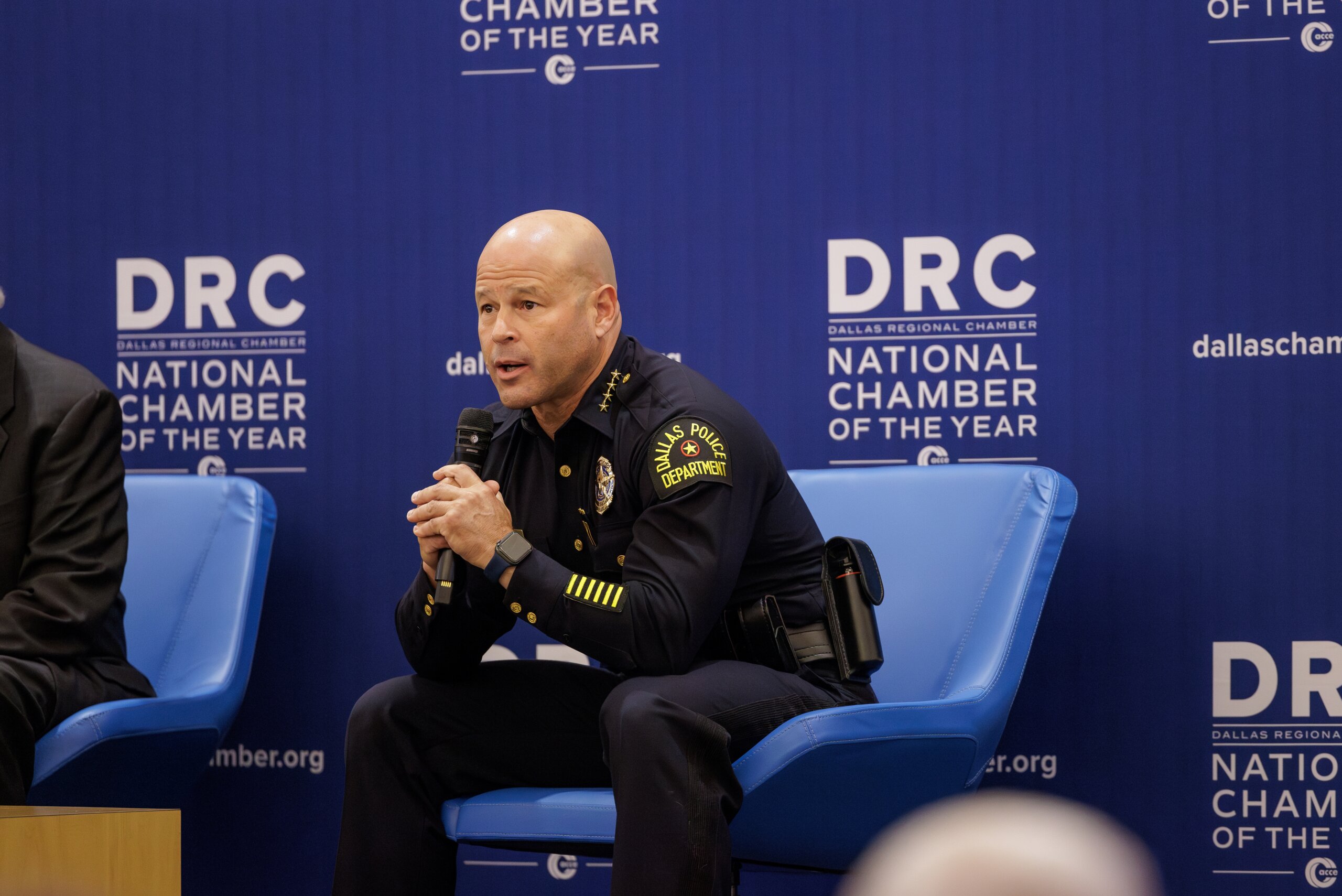By Dylan Guest, Director, Communications
The Dallas Regional Chamber’s (DRC) Public Safety Sub-Council supports companies’ efforts to build trust between institutions of public safety and the communities they serve.
The latest meeting, held Tuesday, June 4, featured Dallas Police Department Chief Eddie Garcia delivering insights on the importance of public safety and the latest trends—and why they matter to the business community.
Public safety goes hand in hand with economic development.
“We know that if the city is not safe, that doesn’t do well for our businesses,” said Garcia. “[Business] success is our success, and vice versa.”
He also discussed how re-entry policies can help the business community and reduce crime, a topic covered at the DRC’s recent State of Public Safety event.
“If people need opportunities–job opportunities, job training, help with mental health, and more–we want to help them and we need businesses to open their doors,” said Garcia. “We need to give people the best opportunities we can when they re-enter our communities.”

A data-driven approach to crime hotspots throughout Dallas had led to success.
When Garcia received the call that Dallas was looking for a new police chief, the reduction of violent crime was a point of emphasis.
“From that point on, I knew I was going to go to the criminologists to develop a data-driven plan that really works,” said Garcia.
One of the most significant approaches taken was to divide the City of Dallas into 101,000 micro-grids, each roughly the size of a football field, to identify where most of the violent crime was occurring.
“We noticed a very small percentage of the grids being responsible for a large amount of crime,” said Garcia.
The Dallas Police Department increases its presence in certain grids during times in which violent crime is more likely to occur, leading to a swift reduction of crime.
“The data showed us that violent crime was dropping in grids after 60 days,” said Garcia. “We’ve seen a 40-60% crime reduction within some grids.”
Garcia said that the Dallas Police Department’s partnership with criminologists and their data-driven approach allowed them to obtain the data they needed and improved their ability to access more grids across the city.
The 911 communications center deserves praise.
“We call them the angels on our shoulders… we can get nothing accomplished without them,” said Garcia about the 911 call operators.
The dispatchers play a crucial role in public safety, serving as the first point of contact in emergencies. In high-stress situations, 911 dispatchers gather information to quickly assess a situation and dispatch the appropriate emergency services, all while providing a calm and reassuring presence.
“I’ve been on every proactive unit – narcotics, homicide, SWAT, you name it – I was more nervous dispatching a call than I was doing an entry on the SWAT team.”
Recruitment and retention remain a crucial topic.
A shortage of officers has affected police departments locally and across the country.

“The recruiting issue is a national recruiting crisis,” said Garcia.
However, the Dallas Police Department is in an improved spot compared to previous years in terms of numbers.
“In the last few months, our attrition is going down and our academy numbers are going up,” said Garcia.
Training and education of recruits takes time, meaning retaining active officers is crucial.
“I can have 100 individuals who start the academy, but after getting through training it’s almost a year-and-a-half until we feel their impact, so we have to focus on retention,” said Garcia.
The DRC’s Public Safety Sub-Council is a collaboration between the Diversity, Inclusion & Community Engagement and Public Policy priority areas.